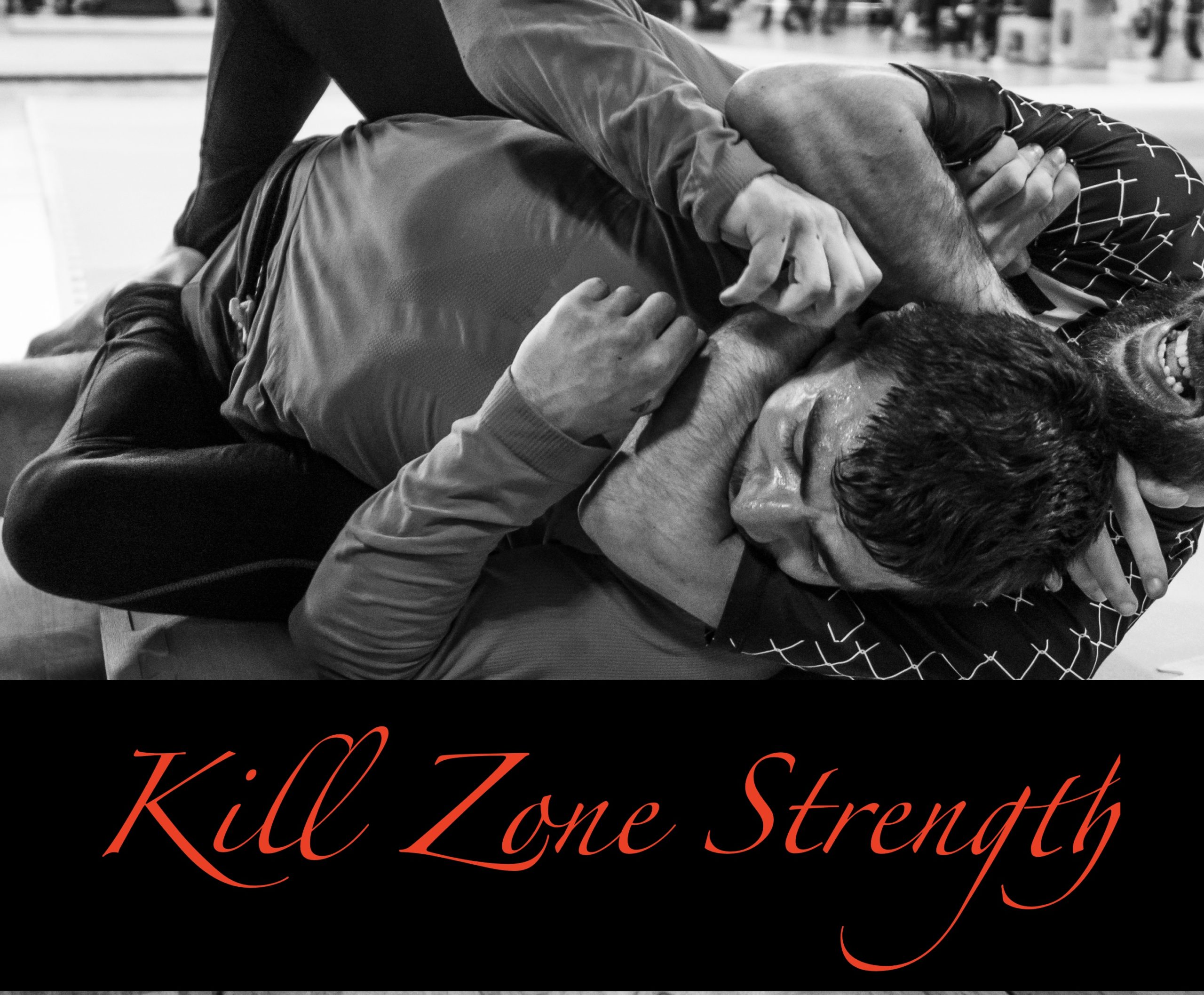Kill Zone Strength
Cross fitters don’t have it. Bodybuilders don’t have it. Neither do olympic lifters or “functional strength” participants. Acute joint-angle strength (or, endearingly, Kill Zone Strength) is an attribute that is exclusive to submission sports. Most athletic activities require participants to extend or “open” their bodies (think clean and jerk or jumping). BJJ students, on the other hand, rely largely on the ability to flex or “close “their bodies (think guard retention or submissions). In BJJ, it is critical for fingers, elbows, hips or knees to maintain pressure as they bend – especially for submissions like chokes. Kill zone strength is the ability to express high energy at very acute (beyond ninety degree) joint angles.
Below are some specific examples (including relevant joints) where kill zone pressure is critical:
- rear naked choke (elbow and shoulder)
- guillotine (elbow and shoulder)
- Arm overwrap (elbow and shoulder)
- Cross collar choke (shoulder)
- Ankle lock (elbow and shoulder)
- Heel Hook (elbow and shoulder)
- Re-guarding (hip)
- Home Alone or defensive posturing (elbows and shoulder)
- Kimura (wrist)
- Back control hooks and arm traps (knees)
- Locked closed guard (ankles)
- Gi gripping (fingers)
***Technically, closing the space between the ribs and humerus is known as shoulder adduction or extension and not flexion.
ETC!
It is often assumed that muscles, when exposed to an exercise, strengthen evenly throughout their range of motion. In fact, muscles strengthen very specifically to the demand placed on them. Exposing a joint to stress at an angle of 35 degrees will result in strength development at an angle of 35 degrees! The development of kill zone strength requires emphasizing maximum stress at joint angles ABOVE ninety degrees. Because of the strength curve (as well as other reasons), most athletic activities and exercises emphasize maximum stress at joint angles equal to or BELOW 90 degrees. The strength curve is a manifestation of the effects of moment arms.

Maximum stress on a joint (in this case the elbow) occurs where the moment arm is longest (the horizontal distance between the red lines). With regard to an orthodox biceps curl, maximum stress occurs at 90 degrees of elbow flexion (Angle 2). Stress on the elbow diminishes both above and below 90 degrees (Angles 1 and 3). You will never have a killer squeeze unless your training emphasizes maximum effort beyond 90 degrees of flexion.
An easy way to accommodate the strength curve is to use resistance bands instead of free weights. With bands the stress increases as exercised joints progressively close. Maximum stress occurs right in the kill zone! In addition to accommodating the strength curve, bands make it easy to get into positions that are familiar to BJJ. Bands are gold – they facilitate the conditioning that is specific to elite squeezers.

BJJ has its own special demands which requires its own special strength and conditioning. If you want your supplemental exercise to improve a BJJ ability, both efforts must be similar in regards to body positioning, force, speed, duration and (of course!) joint angle. Optimal kill zone strength will will not happen haphazardly. It requires awareness and specific tactics. Although BJJ students are the kings of The Kill Zone (as compared to all other sports) most have tremendous room for improvement. Once and for all, forget the Cross Fit, deformed animal movement, olympic lifting and gymnastics – target Kill Zone Strength!
